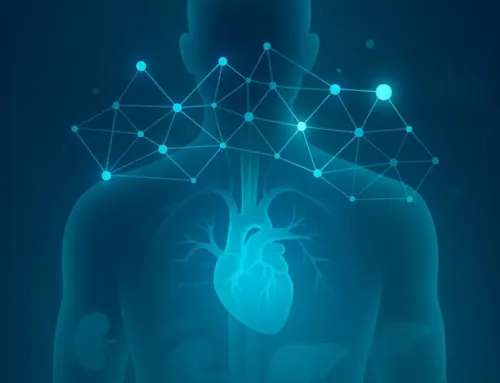
Approx. read time: 12.1 min.
Post: Understanding Fatty Liver Disease and the Role of Gut Health
Fatty liver disease is becoming a significant health concern globally, affecting millions of people. The liver plays a vital role in metabolism, detoxification, and nutrient storage. However, when excess fat accumulates in the liver, it can impair its functions, leading to what is known as fatty liver disease. In recent years, researchers have discovered that gut health is intricately linked to the progression and prevention of fatty liver disease. This article explores fatty liver disease, its causes, symptoms, and treatments, and delves into how maintaining a healthy gut can help manage or prevent this condition.
What is Fatty Liver Disease?
Fatty liver disease (FLD) occurs when excess fat builds up in liver cells. It is categorized into two main types:
- Non-Alcoholic Fatty Liver Disease (NAFLD): This is the most common type of fatty liver disease and is unrelated to alcohol consumption. NAFLD occurs when more than 5% of liver cells contain fat, which is primarily associated with obesity, insulin resistance, and metabolic syndrome.
- Alcoholic Fatty Liver Disease (AFLD): This condition results from excessive alcohol consumption, leading to fat accumulation in the liver. It can progress to more severe conditions such as alcoholic hepatitis and cirrhosis if drinking continues.
Stages of Fatty Liver Disease
Fatty liver disease can progress through different stages:
- Simple Steatosis: This is the earliest stage, where fat accumulates in the liver without significant inflammation or damage. It is often asymptomatic and reversible with lifestyle changes.
- Non-Alcoholic Steatohepatitis (NASH): This stage involves inflammation and liver cell damage, increasing the risk of fibrosis (scarring) and liver cirrhosis.
- Fibrosis and Cirrhosis: Fibrosis occurs when prolonged liver inflammation leads to scarring, making it difficult for the liver to function properly. Cirrhosis is the most severe stage, characterized by irreversible liver damage, which can lead to liver failure or liver cancer.
Causes and Risk Factors of Fatty Liver Disease
The primary causes and risk factors for fatty liver disease include:
- Obesity: Excess fat in the body, especially visceral fat around the abdomen, contributes to fat accumulation in the liver.
- Insulin Resistance: This condition is closely linked to type 2 diabetes and metabolic syndrome. Insulin resistance leads to fat buildup in the liver, promoting the development of NAFLD.
- High Cholesterol and Triglycerides: High levels of fat in the blood can increase the risk of fatty liver disease.
- Poor Diet: Diets high in refined carbohydrates, sugar, and unhealthy fats can lead to weight gain and fat accumulation in the liver.
- Sedentary Lifestyle: Lack of physical activity contributes to obesity and other metabolic conditions that can cause fatty liver.
- Genetics: Family history plays a role, as some people are genetically predisposed to developing fatty liver disease.
- Excessive Alcohol Consumption: In AFLD, long-term alcohol use damages the liver and increases fat deposition.
Symptoms of Fatty Liver Disease
In the early stages, fatty liver disease is often asymptomatic, which makes it challenging to diagnose. However, as the condition progresses, some common symptoms include:
- Fatigue and weakness
- Abdominal discomfort, especially in the upper right side
- Unexplained weight loss
- Enlarged liver (hepatomegaly)
- Jaundice (yellowing of the skin and eyes in advanced stages)
- Swelling in the legs and abdomen (ascites) in cases of cirrhosis
Diagnosing Fatty Liver Disease-Fatty liver disease and gut health
Fatty liver disease is usually diagnosed through a combination of medical history, blood tests, imaging studies, and sometimes a liver biopsy. Common diagnostic methods include:
- Blood Tests: Elevated liver enzymes (ALT, AST) can indicate liver inflammation, although these enzymes may also be normal in early stages of the disease.
- Imaging: Ultrasound, CT scan, or MRI can detect fat accumulation in the liver.
- Liver Biopsy: In more severe cases, a biopsy may be required to determine the extent of liver damage and confirm the diagnosis of NASH.
The Gut-Liver Axis: How Gut Health Affects Fatty Liver Disease
Emerging research has highlighted the importance of the gut-liver axis in the development and progression of fatty liver disease. The gut and liver are connected through the portal vein, which carries nutrients, toxins, and other substances from the digestive tract to the liver. This close connection means that gut health plays a critical role in liver health.
The Role of the Gut Microbiome
The gut microbiome, a complex community of trillions of microorganisms residing in the intestines, is essential for maintaining overall health. These microbes aid in digestion, produce essential vitamins, regulate the immune system, and protect against harmful pathogens. An imbalance in the gut microbiome, known as dysbiosis, has been linked to various health conditions, including fatty liver disease.
How Gut Dysbiosis Contributes to Fatty Liver Disease
Several mechanisms explain how an unhealthy gut can contribute to the development of fatty liver disease:
- Increased Intestinal Permeability (“Leaky Gut”): Gut dysbiosis can damage the intestinal barrier, allowing toxins, bacteria, and inflammatory molecules to enter the bloodstream. This phenomenon, often referred to as “leaky gut,” results in these harmful substances reaching the liver, where they trigger inflammation and fat accumulation.
- Endotoxin Production: Certain harmful bacteria in the gut can produce endotoxins, which are transported to the liver via the portal vein. These endotoxins promote liver inflammation and contribute to insulin resistance, a key factor in NAFLD development.
- Bile Acid Metabolism: The gut microbiota plays a significant role in bile acid metabolism, which is crucial for fat digestion and liver function. Dysbiosis can disrupt bile acid production, leading to fat accumulation in the liver.
- Short-Chain Fatty Acids (SCFAs): Beneficial bacteria in the gut produce SCFAs during the fermentation of dietary fiber. SCFAs have anti-inflammatory properties and help regulate fat metabolism in the liver. A reduction in SCFAs due to dysbiosis can impair liver function and contribute to NAFLD progression.
Probiotics and Prebiotics in Managing Fatty Liver Disease
Maintaining a healthy gut microbiome can play a crucial role in managing and preventing fatty liver disease. Probiotics and prebiotics have gained attention for their ability to support gut health.
- Probiotics: These are live microorganisms that, when consumed in adequate amounts, provide health benefits by restoring the balance of gut bacteria. Some studies suggest that probiotics can reduce liver fat, inflammation, and insulin resistance, which are key factors in the development of fatty liver disease. Probiotic-rich foods include yogurt, kefir, sauerkraut, kimchi, and other fermented foods.
- Prebiotics: These are non-digestible fibers that promote the growth of beneficial gut bacteria. Prebiotics help increase SCFA production, which in turn supports liver health. Foods rich in prebiotics include garlic, onions, leeks, asparagus, bananas, and whole grains.
The Importance of Diet in Maintaining Gut Health and Preventing Fatty Liver
Diet plays a pivotal role in both gut and liver health. A healthy, balanced diet that supports the gut microbiome can help prevent and manage fatty liver disease. Key dietary recommendations include:
- Increase Fiber Intake: A high-fiber diet supports the growth of beneficial gut bacteria and increases SCFA production. Whole grains, fruits, vegetables, legumes, and nuts are excellent sources of dietary fiber.
- Reduce Processed Foods and Sugars: Processed foods, refined sugars, and unhealthy fats can contribute to dysbiosis and fat accumulation in the liver. Limiting these foods can help improve gut and liver health.
- Incorporate Omega-3 Fatty Acids: Omega-3 fatty acids have anti-inflammatory properties and can reduce liver fat. Fatty fish such as salmon, mackerel, and sardines are rich in omega-3s.
- Consume Antioxidant-Rich Foods: Antioxidants help combat oxidative stress and inflammation, which are linked to liver damage. Fruits and vegetables, particularly those high in vitamins C and E, are excellent sources of antioxidants.
Lifestyle Changes for Fatty Liver Disease Prevention
In addition to maintaining a healthy gut, other lifestyle changes can significantly reduce the risk of fatty liver disease and improve liver health:
- Regular Exercise: Physical activity helps reduce body fat, improve insulin sensitivity, and promote healthy liver function. Aim for at least 150 minutes of moderate exercise per week.
- Weight Management: Losing even 5-10% of body weight can significantly reduce liver fat and improve symptoms of fatty liver disease.
- Limit Alcohol Consumption: For those with AFLD, reducing or eliminating alcohol is crucial for liver health. Even for individuals with NAFLD, alcohol can exacerbate liver damage and should be consumed in moderation.
- Manage Blood Sugar and Cholesterol Levels: Keeping blood sugar and cholesterol levels under control is essential for preventing fatty liver disease, particularly in individuals with type 2 diabetes or metabolic syndrome.
Conclusion-fatty liver disease and gut health
Fatty liver disease is a growing health concern, closely linked to lifestyle factors such as diet, obesity, and metabolic health. However, emerging research has shown that the health of the gut plays a vital role in the development and progression of this condition. A healthy gut microbiome can help prevent fatty liver disease by reducing inflammation, improving fat metabolism, and protecting the liver from harmful toxins and endotoxins. Incorporating probiotics, prebiotics, and a fiber-rich diet, alongside other lifestyle changes, can go a long way in managing and preventing fatty liver disease. By prioritizing gut health, individuals can support their liver and overall well-being, reducing the risk of serious liver-related complications in the future.
3-Day Liver Detox Meal Plan-fatty liver disease and gut health
A liver detox plan can help cleanse the liver and support its natural detoxification process. This 3-day meal plan is designed with nutrient-rich, anti-inflammatory, and detoxifying foods that promote liver health. It focuses on whole foods, plenty of vegetables, fruits, and hydration to give your liver a reset.
Day 1: Kickstart Your Detox
Morning:
- Upon Waking:
A glass of warm lemon water with a pinch of turmeric
(Lemon stimulates bile production, and turmeric supports liver detoxification.) - Breakfast:
Green Smoothie:- 1 cup kale or spinach
- 1/2 avocado
- 1/2 cucumber
- 1 small green apple
- 1 tablespoon chia seeds
- 1/2 teaspoon fresh ginger
- 1 cup water or coconut water
Blend until smooth and enjoy!
(Packed with fiber, antioxidants, and nutrients like glutathione from the greens, which supports liver detoxification.)
Mid-Morning Snack:
- A handful of mixed nuts (unsalted)
(Rich in healthy fats and antioxidants that help reduce inflammation.)
Lunch:
- Quinoa Salad with Avocado and Beets:
- 1/2 cup cooked quinoa
- 1/2 avocado, sliced
- 1 small beet, roasted or boiled, sliced
- 1/4 cup shredded carrots
- Mixed greens (spinach, arugula, etc.)
- 1 tablespoon olive oil
- 1 tablespoon lemon juice
- A sprinkle of sunflower seeds
(Beets are rich in betalains, which support detoxification, and quinoa is a protein-rich grain that aids digestion.)
Afternoon Snack:
- Carrot and Celery Sticks with Hummus
(Raw veggies like carrots are great for liver detox, and hummus provides fiber and protein.)
Dinner:
- Baked Salmon with Steamed Broccoli and Sweet Potato:
- 4-6 oz wild-caught salmon
- 1/2 cup steamed broccoli
- 1 small baked sweet potato
Drizzle olive oil and lemon juice on the vegetables.
(Salmon provides omega-3 fatty acids that reduce liver inflammation, and broccoli contains sulforaphane, a compound that boosts liver detox enzymes.)
Evening:
- Herbal Tea:
Dandelion or milk thistle tea
(Both are known for supporting liver health and aiding digestion.)
Day 2: Deep Detox Day
Morning:
- Upon Waking:
Warm water with a splash of apple cider vinegar
(Apple cider vinegar supports healthy digestion and helps flush toxins.) - Breakfast:
Overnight Chia Pudding with Blueberries:- 3 tablespoons chia seeds
- 1 cup unsweetened almond milk
- 1/2 cup fresh or frozen blueberries
- A sprinkle of cinnamon
Mix chia seeds and almond milk and leave overnight. Top with blueberries and cinnamon in the morning.
(Chia seeds are high in fiber and omega-3s, supporting liver health, while blueberries are rich in antioxidants.)
Mid-Morning Snack:
- A small handful of walnuts
(Walnuts contain glutathione and omega-3s, which help detoxify the liver.)
Lunch:
- Detoxifying Lentil Soup:
- 1/2 cup cooked lentils
- 1 carrot, diced
- 1 celery stalk, diced
- 1/2 onion, chopped
- 1 clove garlic, minced
- 1 teaspoon turmeric
- 1 teaspoon cumin
- 2 cups vegetable broth
Sauté the vegetables in olive oil, add spices and broth, and simmer until lentils are soft.
(Lentils are high in fiber and protein, while turmeric and garlic are potent anti-inflammatory and detoxifying agents.)
Afternoon Snack:
- Sliced Apple with Almond Butter
(Apples are high in pectin, which helps cleanse the liver, and almond butter provides healthy fats.)
Dinner:
- Stir-Fried Tofu with Garlic and Spinach:
- 1/2 block organic tofu, cubed
- 1 cup spinach
- 2 cloves garlic, minced
- 1 tablespoon sesame oil
Stir-fry garlic in sesame oil, then add tofu and spinach. Cook until tofu is golden and spinach is wilted.
(Tofu provides plant-based protein, and garlic boosts liver detoxification enzymes.)
Evening:
- Herbal Tea:
Ginger tea
(Ginger supports digestion and reduces inflammation.)
Day 3: Nourishing and Rejuvenating
Morning:
- Upon Waking:
Warm lemon water with a dash of cayenne pepper
(Cayenne pepper stimulates circulation and boosts metabolism, aiding detoxification.) - Breakfast:
Avocado Toast with a Poached Egg:- 1 slice whole grain or sprouted bread
- 1/2 avocado, mashed
- 1 poached egg
- Sprinkle of hemp seeds
Top the toast with mashed avocado, the poached egg, and hemp seeds.
(Avocado is rich in glutathione, which helps cleanse the liver, and eggs are a source of choline, a nutrient that supports liver function.)
Mid-Morning Snack:
- Green Juice:
- 1 cucumber
- 1/2 bunch parsley
- 1 green apple
- 1/2 lemon
- 1-inch ginger
Juice all ingredients together.
(This juice is packed with antioxidants, vitamins, and minerals that support liver detox.)
Lunch:
- Grilled Chicken with Cabbage and Apple Slaw:
- 4 oz grilled organic chicken breast
- 1/2 cup shredded cabbage
- 1/2 apple, julienned
- 1 tablespoon apple cider vinegar
- 1 tablespoon olive oil
Toss the cabbage and apple with olive oil and vinegar, and serve with grilled chicken.
(Cabbage helps activate liver detox enzymes, while apple cider vinegar aids digestion.)
Afternoon Snack:
- Cucumber Slices with Guacamole
(Cucumbers are hydrating and help flush out toxins, while guacamole provides healthy fats.)
Dinner:
- Zucchini Noodles with Pesto and Grilled Shrimp:
- 1 zucchini (spiralized)
- 1 tablespoon homemade pesto (basil, garlic, olive oil, and pine nuts)
- 4-6 grilled shrimp
Toss zucchini noodles with pesto and top with shrimp.
(Zucchini is hydrating and low in calories, while shrimp provides lean protein, and basil helps reduce inflammation.)
Evening:
- Herbal Tea:
Peppermint tea
(Peppermint helps soothe digestion and supports liver function.)
Additional Detox Tips:
- Stay Hydrated: Drink plenty of water throughout the day to support the flushing of toxins from your body.
- Avoid Sugar and Processed Foods: Stick to whole, natural foods that support your liver and overall health.
- Incorporate Light Exercise: Gentle activities like walking, yoga, or stretching can support circulation and metabolism during your detox.
By following this 3-day liver detox meal plan, you’ll be nourishing your liver with wholesome, nutrient-rich foods that promote detoxification and overall health.
Related Videos:
Related Posts:
Do I suffer from Alpha-1 Antitrypsin (AAT) Deficiency?
How can dietary choices impact the prevention and management of dementia and Alzheimer’s disease?
Top Foods That Rebuild Mitochondria for Optimal Health and Energy
Supporting Gut Health: Essential Dietary Strategies and Foods









